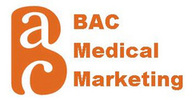The impact of yet more regulations, such as Stage 3 Meaningful Use, could be too late to save the ACA. For now, the administration and those of us that hope the ACA succeeds must work to shift EHR vendors and their institutional customers toward patient engagement using the tools of policy guidance, public relations and federal procurement.
First, a crash course in health economics. If you have a few minutes, read Accountable Care Organizations: Can We Have Our Cake and Eat It Too? by Jessica L. Mantel. Otherwise, just struggle through the next two paragraphs summarizing why EHRs are the lynchpin of health reform via the ACA.
Cost containment requires either cost controls or a shift away from fee-for-service payment. The ACA is based on accountable care as an alternative to fee-for-service. Accountable Care Organization (ACO) is shorthand for the new health care payments regime. By paying ACO institutions instead of individual service providers, health insurance companies and Medicare provide direct economic incentives to reduce waste, lower costs and, if we’re not careful, withhold needed care. An ACO is by definition an organization or institutional construct.
The EHR is is not the Jedi knight’s lightsaber, it is an institutional tool designed to bind the individual service providers into the Federation’s collective. Not surprisingly, patient engagement is an afterthought.
Mantel’s paper examines the structure of ACOs and the reasons why we need to be careful that ACOs don’t withhold needed care in their struggle for a share of what is currently a bloated market that’s costing each US citizen some $3,000 more per year than anywhere else in the developed world. Simply put, ACOs will try to reduce costs, ration care and overstate quality. ACOs, after harvesting the easy savings from “low hanging fruit” such as non-essential hospital admissions, will turn to care coordination and rationing. Care coordination is wonderful but it costs money and will reach diminishing returns as well. Rationing will be moderated by added ACO regulation and independent quality measures. For their part, ACOs will leverage their scale to reduce competition and impede independent quality measures. EHRs are pitched as essential for care coordination but they are purchased as a strategic tool for gaining share of shrinking markets.
Patient engagement, from a health economics perspective, is incidental in care coordination but essential in avoiding the perception of rationing.
The book on patient engagement is yet to be written. EHRs still treat patient engagement as a liability and state health information exchanges (HIEs) are still being designed without any patient engagement at all. (Opt-in and opt-out is still as far as they go.) Both EHRs and HIEs still perceive strong privacy principles and fair information practices as obstructionist.
The path to health reform in the age of unlimited connectivity and mobility cannot continue to bypass the patient. EHRs are an institutional tool and they are unlikely to be either the doctor’s or the patient’s lightsaber regardless how many federal regulations, certifications and billions of dollars we throw at them. Patients and doctors need our own Internet-age tools built from the ground up for privacy and patient engagement. Let’s start by making sure our data can be liberated from the various EHRs via Blue Button Plus and that every federally certified HIE includes provisions for a patient-accessible EHR Record Locator Service. These are the foundation of patient engagement and essential to the success of the Affordable Care Act.

 RSS Feed
RSS Feed































